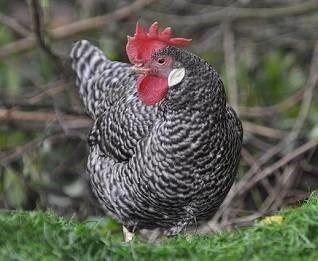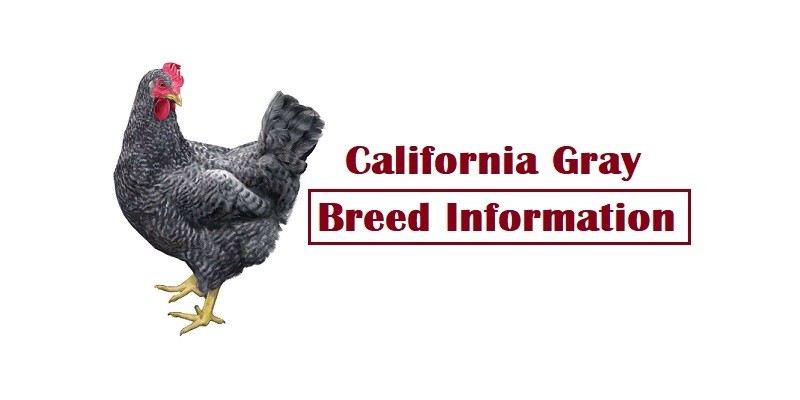Last Updated on February 9, 2021 by Pauline G. Carter
California gray chicken was developed in the 1930s by a professor of poultry science from Oregon Agricultural College – Professor James Dryden from California State, USA. His objective for developing this chicken breed was just to produce a dual-purpose chicken breed – for meat production and egg-laying, as the market needed.
He was also aiming to come up with a bird that can lay eggs well and last for more than 2 years. He crossed a Barred Plymouth Rock rooster and a White Leghorn hen. He was able to produce a naturally auto-sexing breed from this experiment.
He came up with a gray barred plumage. This gray chicken became a rare breed in the 21st century because it was never recognized by the American Poultry Association (APA). It is not included on the list of conservation priorities. Its other name is “Production Black”. Here is the list where you see the total 80 Chicken Breeds Information (A-Z List)
California Gray Chicken | Breed Profile

| Country of origin: | California |
| Primary use: | Dual-purpose meat/eggs |
| Weight: | Male: 2.5 kg (5.5 lb), Female: 2.0 kg (4.4 lb) |
| Temperament: | Quiet |
| Recognized Varieties: | No |
| Egg production (annual): | 300 |
| Egg color: | White |
| Egg size: | Large |
| Comb type: | Single |
Characteristics Of The California Gray Chicken
Male California Gray weighed 2.5 kg while the female weighed 2 kg. Its egg size is large; its egg color is white and can produce around 300 eggs annually. This chicken breed, among other breeds, is prone to suffer from egg binding.
This can be avoided by giving them enough calcium and exercise. Vaccination is advised for this breed with the weaker immune system. Their feeds must be kept medicated, too.
It is a large fowl. Its body type is heavier than a Leghorn’s but no as a clunky as a Plymouth Rock breed. They are not flighty birds. This chicken breed is an excellent winter egg layers. Its variety is barred.
It personally is active but can be tamed and is not broody. They prefer a moderate climate but can thrive well in a cold climate. They can handle confinement.
Males (cockerels) are of a lighter color than the females (pullets). This color difference helps in distinguishing the young birds’ sexes. The roosters are lightly barred with gray and white stripes while hens are barred with almost black and white stripes.
The black chicks have white spots on top of their heads while their abdomen, chest, and wingtips are all white.
They possess reddish-brown eyes and yellow shanks and toes.
Behavior/ Temperament/ Use
California Gray has quieter temperament than White Leghorns. They are not flighty. This chicken breed is a good source of meat and white eggs, especially during winter or cold season. They can produce California White when crossed with White Leghorns, which is also an excellent white egg layer.
What We Liked/Pros
- Great meat and egg source.
- Weighs 2 to 2.5 kgs.
- Higher producer of white eggs. Can lay 5 eggs per week or 300 per year.
- Auto-sexing breed.
- Adaptive to winter seasons / cold climates.
- Accepts confinement and not flighty.
What we don’t like/Cons
- It is not accepted by APA.
- Rare breed.
DON’T MISS
- Buckeye Chicken Breed Information
- Brahma Chicken Breed Information
- Appenzeller Spitzhauben Chicken Breed Information
About Author (Pauline G. Carter)

Pauline G. Carter is a well-known pet blogger who has written about the world of pets for several years. She is passionate about pets, from cats and dogs to birds, reptiles, and poultry. Her blog, which is updated regularly, is filled with articles and guides on pet care, nutrition, and training. She also shares her experiences and observations on pet ownership, making her blog relatable and informative for pet lovers. She is a true animal advocate and is dedicated to promoting responsible pet ownership. Let’s Go …




